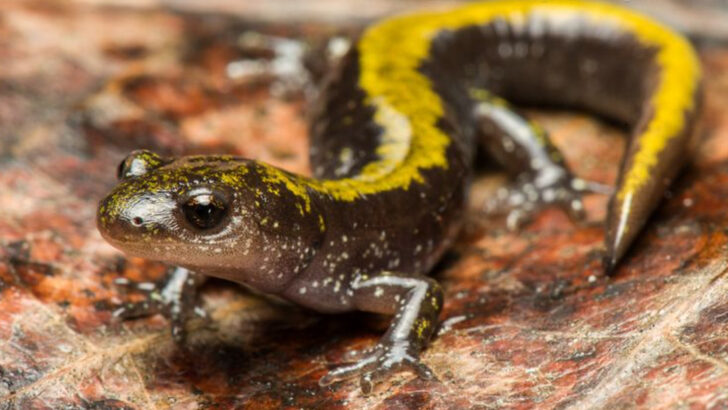Washington’s rainforests are a hidden world of wonder, where amphibians rule the shadows and thrive in the constant moisture.
In this lush, green paradise, vibrant frogs leap between leaves, and elusive salamanders slip through the damp earth, masters of survival in an environment unlike any other. These creatures aren’t just part of the landscape—they are the heartbeat of the ecosystem.
From the bright flash of a tree frog’s colors to the quiet glide of a salamander in a stream, each species has found its place in this thriving, ancient forest.
Join us as we explore 16 fascinating amphibians that call Washington’s rainforests home, uncovering the secrets behind their extraordinary adaptations and the crucial role they play in keeping this ecosystem alive.
Pacific Tree Frog
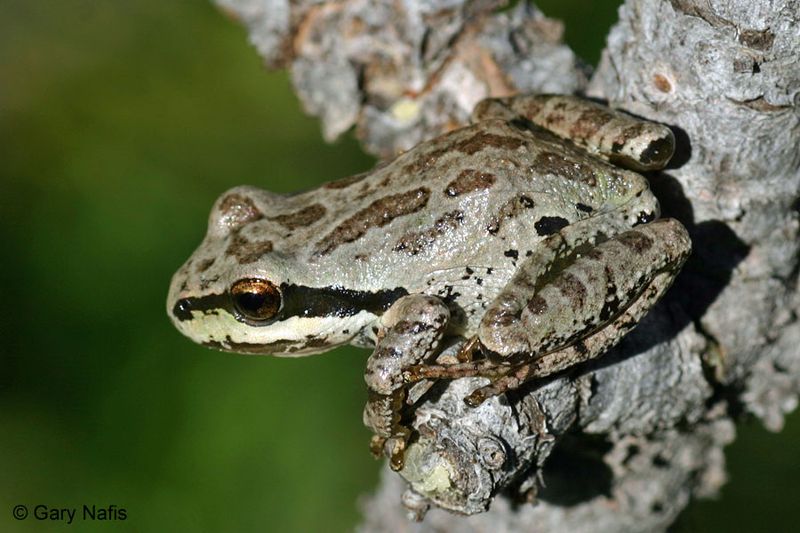
The Pacific Tree Frog, with its vibrant green hue, is an iconic resident of Washington’s rainforests. Known for its striking call, this little frog fills the forest with its melodious croaks. Its sticky toe pads enable it to climb effortlessly through the dense foliage.
Found near ponds and streams, the Pacific Tree Frog thrives in wet environments. Its ability to change color to match its surroundings offers excellent camouflage. Despite its small size, this frog plays a crucial role in controlling insect populations. Look closely and you might spot one during a forest walk.
Curious about its transformation? This frog changes color based on temperature, humidity, and light. It’s a true marvel of adaptation, thriving where many others cannot.
Rough-Skinned Newt
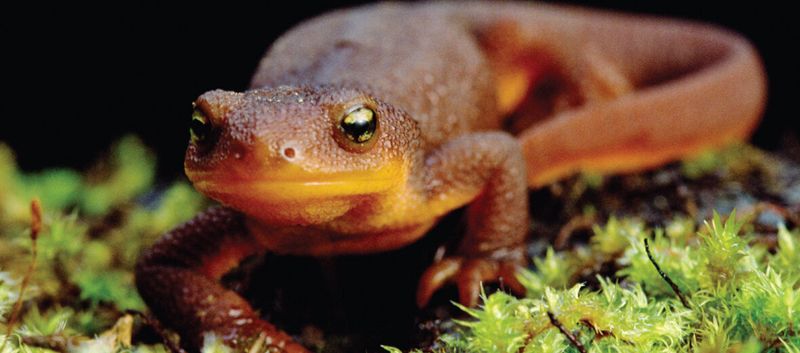
The Rough-Skinned Newt may seem unassuming at first glance, but this amphibian holds a secret. Its dark, rugged skin shields a bright orange belly, a warning of the potent toxin it carries.
Commonly found in streamside habitats, this newt is a master of both land and water. It navigates the rainforest with ease, searching for invertebrates to feast on. Its toxin, tetrodotoxin, can be lethal to would-be predators, making this newt a formidable resident of Washington’s forests.
Legend has it, indigenous peoples once used this newt’s toxin for hunting. Its dual life and adaptability make the Rough-Skinned Newt a fascinating subject of study.
Ensatina Salamander
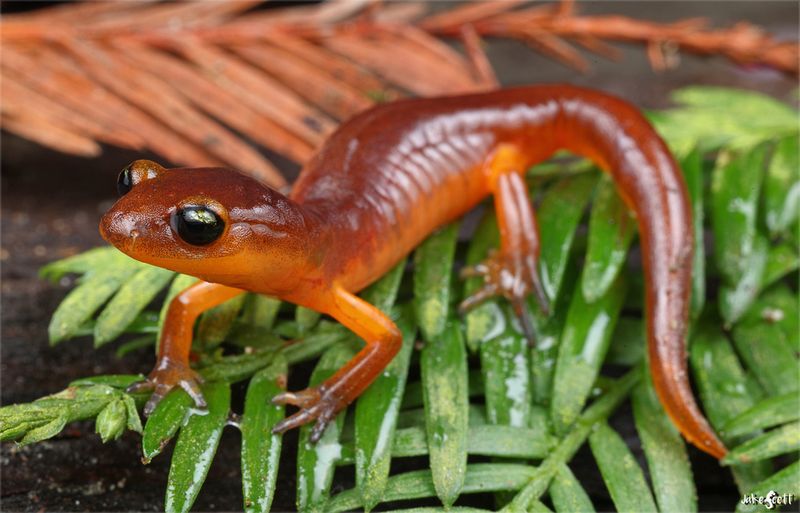
The Ensatina Salamander, with its striking orange and black pattern, is a sight to behold. It resides beneath the leaf litter, emerging to hunt at dusk. This nocturnal lifestyle helps it avoid predators and dehydration.
Its slender body allows it to maneuver through tight spaces, seeking out insects and other small prey. Found throughout Washington’s rainforests, the Ensatina is a key player in controlling insect populations.
Interestingly, this salamander employs a unique defense mechanism. When threatened, it can disconnect its tail to distract predators, making a quick getaway. Truly, the Ensatina Salamander is a master of survival.
Northwestern Salamander

The Northwestern Salamander is a robust and impressive amphibian found in Washington’s forests. With its dark, smooth skin, it often resides near ponds and wetlands. This salamander is an adept burrower, creating tunnels for protection and temperature regulation.
During the breeding season, it migrates to water bodies, where its larvae develop into adults. The Northwestern Salamander’s life cycle is a testament to the delicate balance of nature. Its presence indicates a healthy ecosystem.
As an intriguing aspect, its larvae are known to produce a mild toxin, deterring predators and ensuring their survival until maturity. This salamander is truly an ecosystem engineer.
Red-legged Frog
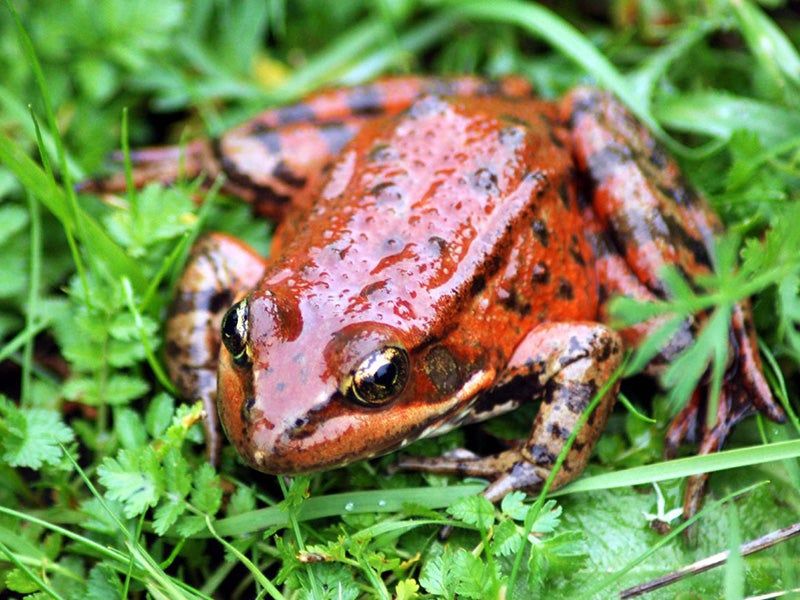
The Red-legged Frog stands out with its vibrant red legs and distinctive spotted back. Preferring cool, shady environments, it is often found near streams and wetlands. This amphibian is particularly sensitive to changes in the environment, making it an important indicator species.
Its diet consists mainly of insects, contributing to the ecological balance of the forest. During the breeding season, the Red-legged Frog’s call can be heard echoing through the rainforest.
Remarkably, this frog can leap great distances to escape danger, its powerful legs propelling it to safety. Witnessing this leap in action is truly a spectacle of nature’s agility.
Western Toad
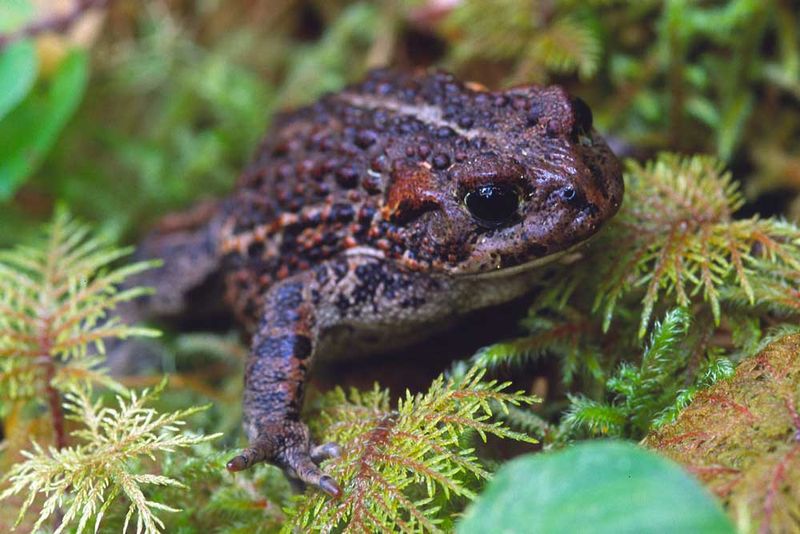
The Western Toad, with its bumpy skin and earthy tones, is a common sight in Washington’s rainforests. It is well-adapted to the damp environment, often found under logs or in leaf litter.
Its diet is diverse, ranging from insects to small vertebrates. This makes it a crucial part of the forest’s food web. The Western Toad’s call, a soft trill, adds to the symphony of the forest.
Interestingly, this toad has a unique defense: it can inflate its body to deter predators. This, along with its toxic skin secretions, ensures its survival in the wild. The Western Toad is a true testament to nature’s resilience.
Olympic Torrent Salamander
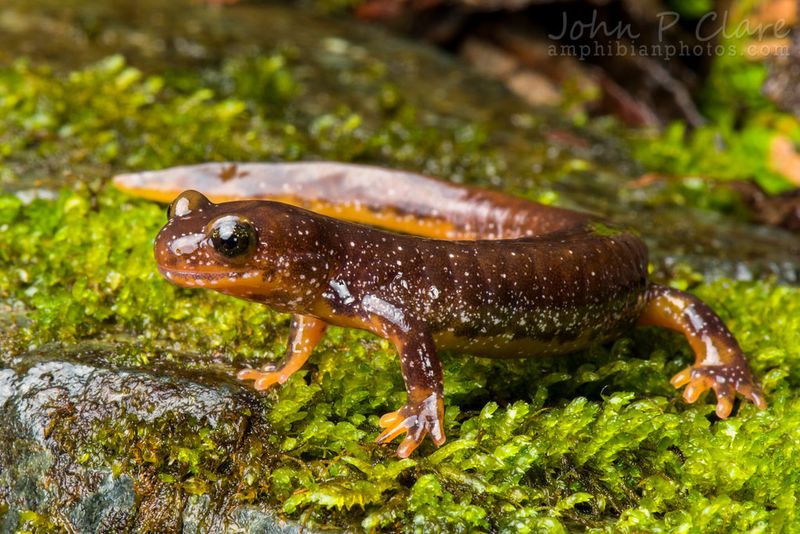
The Olympic Torrent Salamander is a specialist of fast-flowing streams in Washington’s rainforests. Its slender, agile body is perfectly adapted to life in turbulent waters, allowing it to cling to rocks with ease.
This salamander is a master of camouflage, blending seamlessly with the streambed. It feeds on aquatic invertebrates, playing a vital role in the aquatic ecosystem. Its presence is a sign of clean, oxygen-rich water.
Fascinatingly, the Olympic Torrent Salamander has a unique breeding strategy, laying eggs under rocks to protect them from the current. Observing this salamander in its natural habitat is a rare treat.
Coastal Giant Salamander
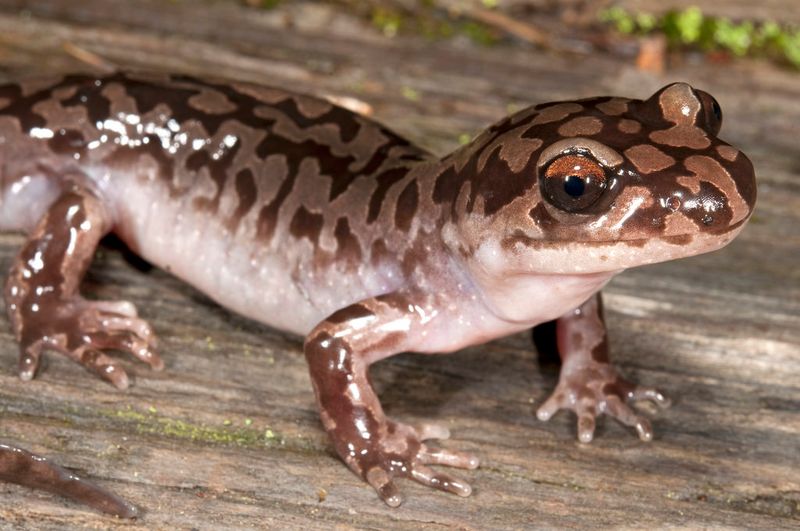
The Coastal Giant Salamander is one of the largest terrestrial salamanders in North America. Its mottled skin provides excellent camouflage amidst the forest undergrowth. This amphibian is known for its imposing size and intriguing life cycle.
Spending its juvenile stage in water, it transforms into a terrestrial adult. As a formidable predator, it feeds on a variety of invertebrates and small vertebrates.
Interestingly, this salamander can bark when threatened, a behavior not often seen in amphibians. This unique trait, coupled with its impressive size, makes the Coastal Giant Salamander a captivating creature to encounter in Washington’s rainforests.
Long-toed Salamander
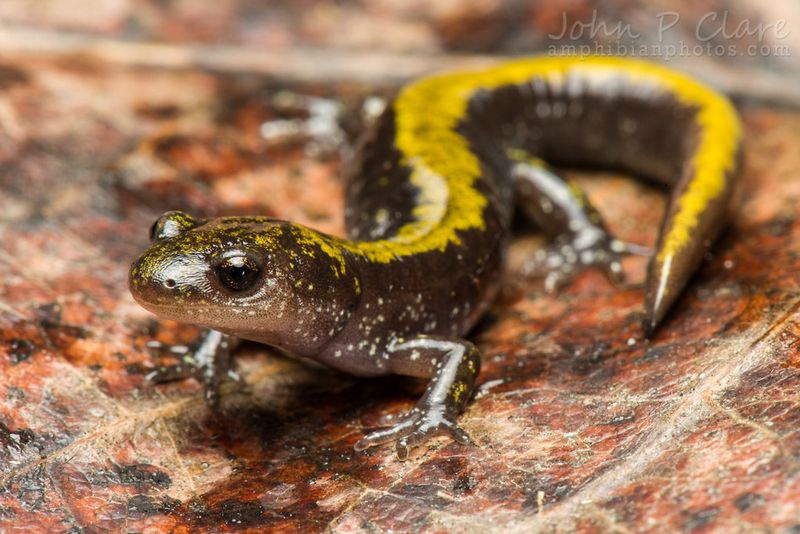
The Long-toed Salamander, with its distinctive yellow stripe and elongated toes, is a master of its moist habitat. It resides in the leaf litter of Washington’s rainforests, venturing out on damp nights to hunt.
This salamander is particularly adept at navigating its environment, using its long toes to traverse difficult terrain. Its diet consists mainly of invertebrates, aiding in pest control.
An amazing fact about this salamander is its ability to regenerate lost limbs, a feature that fascinates scientists and nature enthusiasts alike. The Long-toed Salamander is truly a testament to nature’s ingenuity and resilience.
Western Red-backed Salamander

The Western Red-backed Salamander is easily recognized by its striking red stripe that runs down its back. This salamander prefers the damp, dark environments of Washington’s rainforests, often found under logs and rocks.
Its flattened body allows it to squeeze into tight crevices, providing a safe haven from predators. Feeding on small invertebrates, it plays a crucial role in maintaining the forest’s ecological balance.
Interestingly, this salamander is lungless, breathing entirely through its skin. This adaptation allows it to thrive in the humid forest environment. The Western Red-backed Salamander is a phenomenal example of evolutionary adaptation.
Columbia Spotted Frog
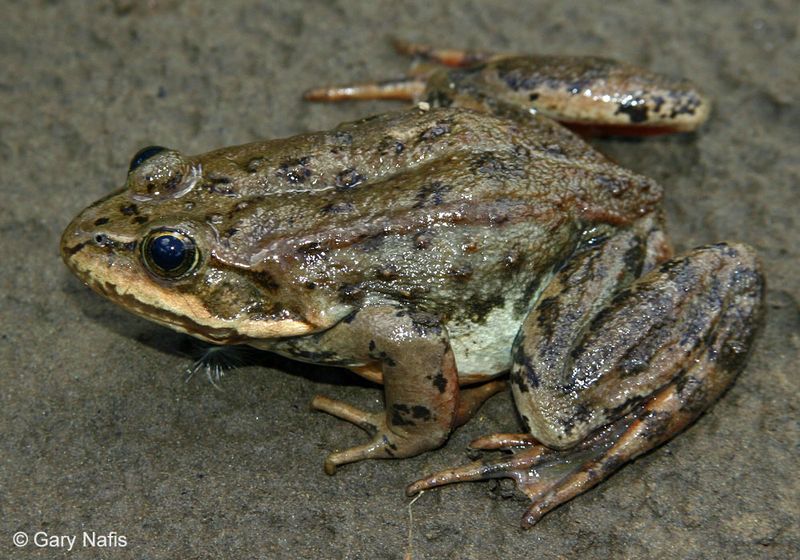
The Columbia Spotted Frog, with its olive skin and dark spots, is a master of disguise in Washington’s rainforests. It is often found near clear streams and ponds, where it feeds on a variety of insects.
This frog is highly sensitive to environmental changes, making it a crucial indicator species for scientists. Its presence signifies healthy water systems and balanced ecosystems.
A fascinating aspect of the Columbia Spotted Frog is its overwintering behavior. It survives the cold months by hibernating in mud or under debris, emerging in spring to continue its life cycle. The Columbia Spotted Frog is a vital part of the forest’s biodiversity.
Tailed Frog
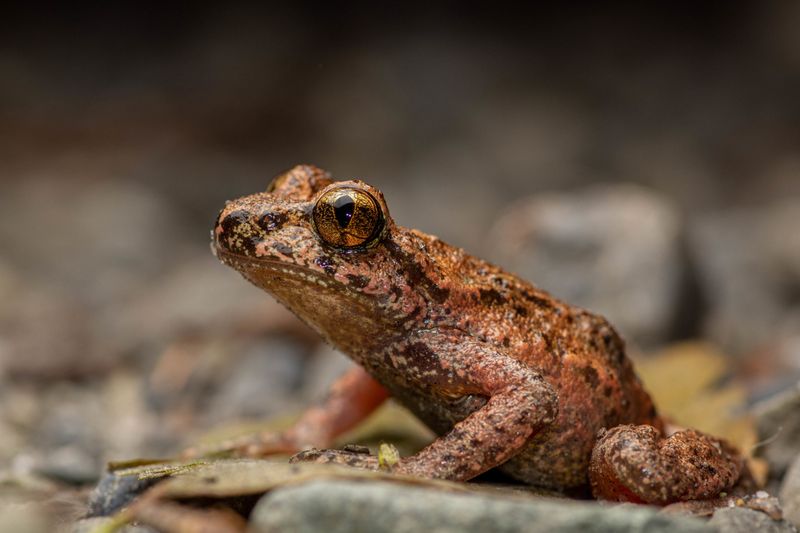
The Tailed Frog is a unique amphibian, known for the small tail retained by males. This feature aids in reproduction, a rare trait among frogs. Found in the fast-flowing streams of Washington’s rainforests, it is an adept swimmer.
This frog’s specialized toe pads allow it to grip slippery surfaces, making it perfectly suited for life in turbulent waters. Its diet primarily consists of aquatic invertebrates, contributing to the health of the stream ecosystem.
The Tailed Frog’s ability to thrive in clear, cool streams makes it an important indicator of water quality. Observing this frog is a delight, revealing the wonders of aquatic adaptation.
Cascades Frog
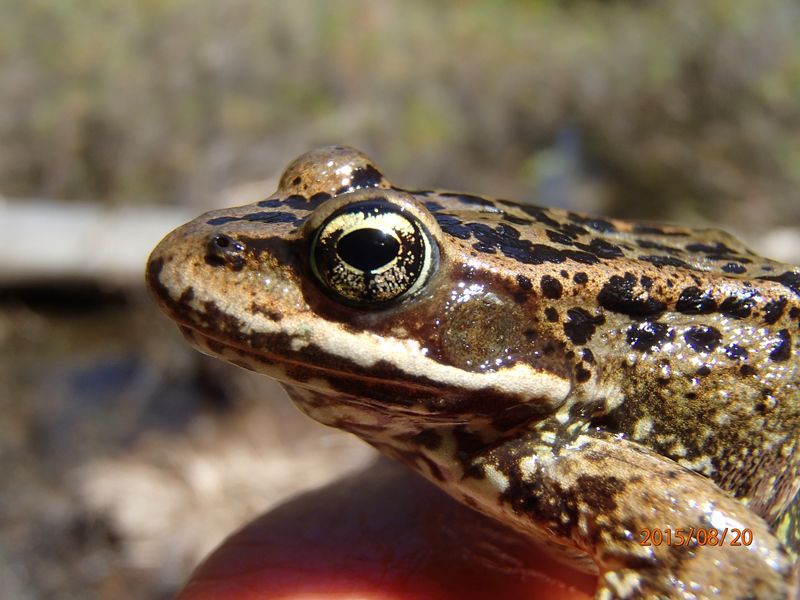
The Cascades Frog, with its vibrant green hue and distinctive white belly, is a striking inhabitant of Washington’s rainforests. Preferring cool, moist environments, it is often found among ferns and moss.
Its diet consists mainly of insects, playing a crucial role in pest control within the forest. The Cascades Frog is known for its distinctive mating call, a melodious symphony that fills the air during the breeding season.
An interesting trait is its ability to survive freezing temperatures by entering a state of dormancy. This remarkable adaptation allows the Cascades Frog to thrive in its challenging habitat, a true marvel of nature.
Blotched Tiger Salamander
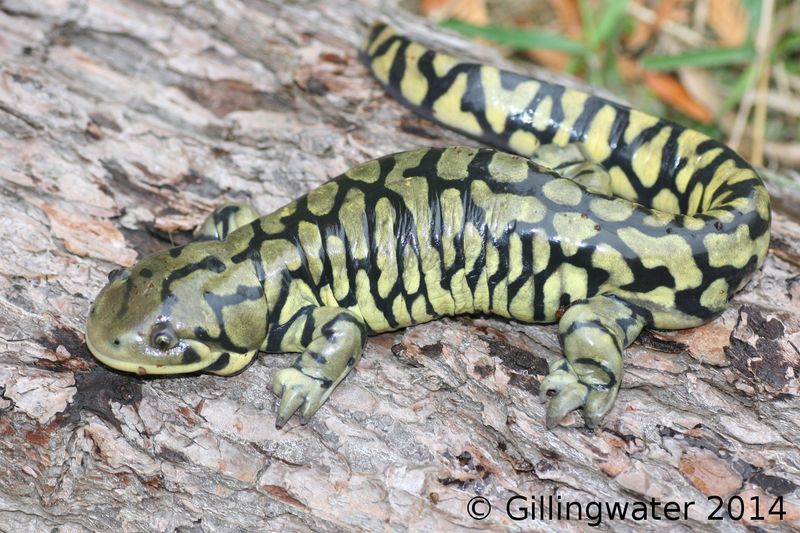
The Blotched Tiger Salamander, with its striking blotches and smooth skin, is a fascinating resident of Washington’s rainforests. This large salamander is often found in burrows, where it hides to escape predators and regulate its body temperature.
Its diet includes a range of invertebrates, making it a formidable predator in its ecosystem. The Blotched Tiger Salamander’s ability to regenerate lost limbs is a subject of scientific interest.
An intriguing feature is its dual lifestyle, spending part of its life in water and part on land. This adaptability makes the Blotched Tiger Salamander a resilient and captivating creature.
Oregon Spotted Frog
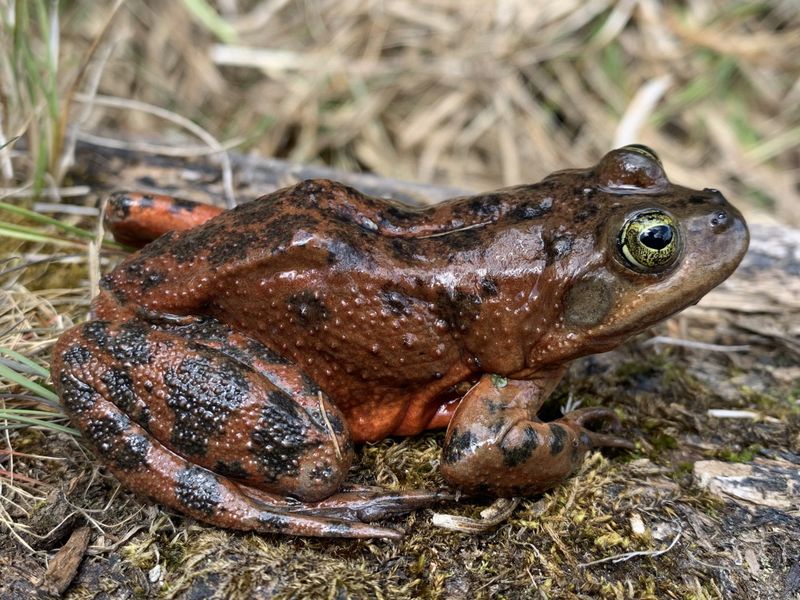
The Oregon Spotted Frog, with its distinctive reddish-brown spots, is a rare and threatened species in Washington. Found near ponds and wetlands, this frog relies on aquatic environments for breeding. Its call, a series of soft clicks and clucks, can be heard during the breeding season.
Its diet primarily consists of insects, making it an important component of the forest’s food web. The Oregon Spotted Frog’s population decline is linked to habitat loss, highlighting the need for conservation efforts.
This frog’s unique vocalizations and vibrant appearance make it a treasured, albeit rare, sight in Washington’s rainforests.
Rainforest Glass Frog
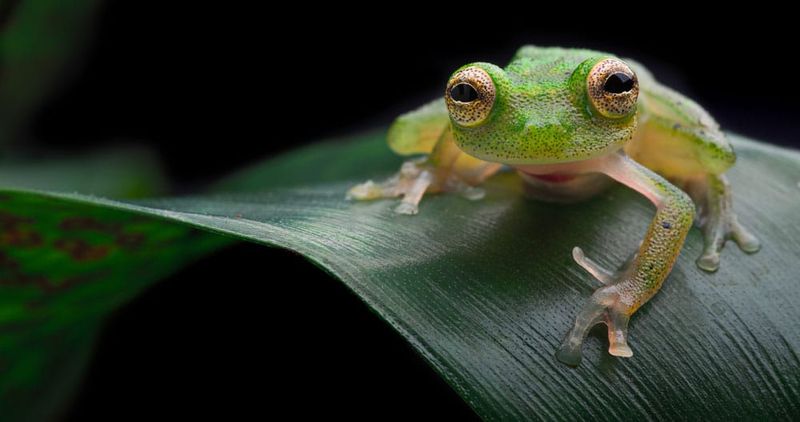
The translucent beauty of the Rainforest Glass Frog grants it an air of mystery as it perches quietly on rain-drenched leaves. Its delicate, see-through skin exposes its internal organs, making it a marvel of nature’s artistry.
Living primarily in the canopy, this frog descends during heavy rains, its skin glistening with moisture. The Rainforest Glass Frog is nocturnal, relying on its exceptional night vision to hunt and evade predators.
An intriguing fact: The transparency of this frog doesn’t just serve as camouflage; it also plays a crucial role in thermoregulation, allowing it to absorb heat efficiently while avoiding overheating in direct sunlight.

